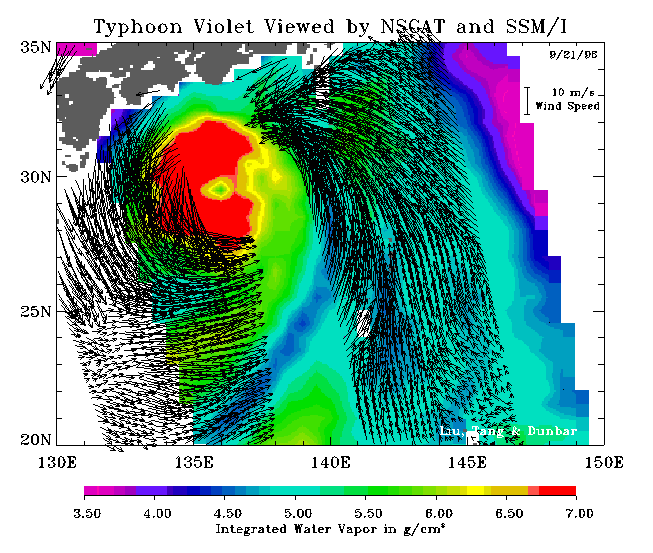
| |||||
|
|
|
|
|
|
|
|
|
|
|
|
|
|

Typhoon Violet is revealed by the wind vectors (dark arrows) and the precipitable water (color image) on 21 September 1996, just before it hits the Honshu Island of Japan, causing damage and death. The wind and water vapor are derived from the observations by the National Aeronautics and Space Administration Scatterometer [NSCAT] on the Japanese Advanced Earth Observing Satellite [ADEOS] and the Special Sensor Microwave / Imager [SSM/I] on the operational spacecraft, F-13, of the Defense Meteorological Space Program, along their respective ascending orbits which are roughly five hours apart. Since the start of ocean observing mode on 15 September, NSCAT has observed the evolution of Violet from a tropical cyclone into an extratropical storm with developing frontal structure (in the northeast), increasing asymetry, and intrusion of drier air into the core.
The overlay of wind on precipitable water dramatically visualizes not only the structure of this evolving system, but also the relation between the dynamics and the hydrologic balance in the mesoscale. The figure also demonstrates the capability of microwave sensors under both clear and cloudy conditions. The detailed structure of the wind-field also illustrates the high spatial resolution of NSCAT.
| PRIVACY | | IMAGE POLICY |
Webmaster: Xiaosu Xie
|